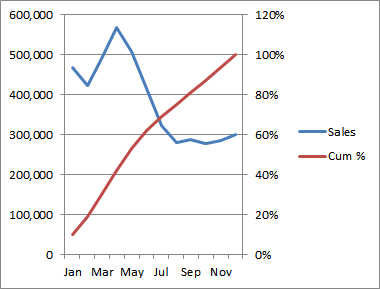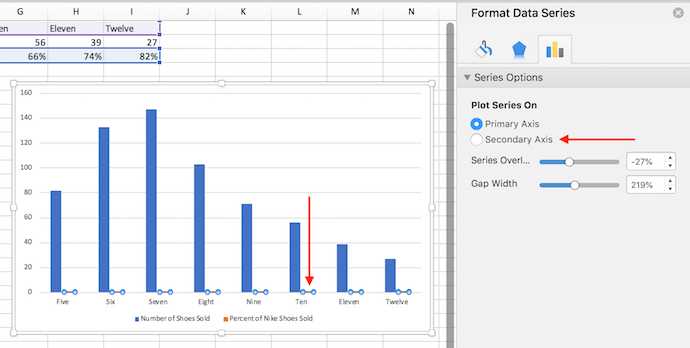

Step #3: Set up the x-axis values for the curve.īasically, the chart constitutes a massive number of intervals (think of them as steps) joined together with a line to create a smooth curve. Getting Startedįor illustration purposes, let’s assume you have the test scores of 200 students and want to grade them “on a curve,” meaning the students’ grades will be based on their relative performance to the rest of the class: Now that you know the essentials, let’s move from theory to practice.

It’s worth mentioning the 68-95-99.7 rule that can be applied to any normal distribution curve, meaning roughly 68% of your data is going to be placed within one SD away from the mean, 95% within two SD, and 99.7% within three SD.

The lower the SD, the taller the curve and the less your data will be spread out, and vice versa. For instance, in the bell curve shown above, one standard deviation of the mean represents the range between exam scores of 53 and 85. This defines the spread of your data in the normal distribution-or in plain English, how wide the curve should be. The standard deviation (SD) of the measurements.This determines the center of the curve-which, in turn, characterizes the position of the curve. The mean (also known as the standard measurement).To plot a Gaussian curve, you need to know two things:
#Excel for mac two y axis how to#
In this step-by-step tutorial, you will learn how to create a normal distribution bell curve in Excel from the ground up: That’s why we developed the Chart Creator Add-in, a tool that allows you to build advanced Excel charts in just a few clicks. Since Excel doesn’t have any built-in solutions to offer, you will have to plot it yourself. The graph helps us analyze whether a particular value is part of the expected variation or is statistically significant and, therefore, has to be examined more closely. The y-axis represents the relative probability of a given value occurring in the dataset while the x-axis plots the values themselves on the chart to create a bell-shaped curve, hence the name. In statistics, a bell curve (also known as a standard normal distribution or Gaussian curve) is a symmetrical graph that illustrates the tendency of data to cluster around a center value, or mean, in a given dataset.
#Excel for mac two y axis download#


 0 kommentar(er)
0 kommentar(er)
